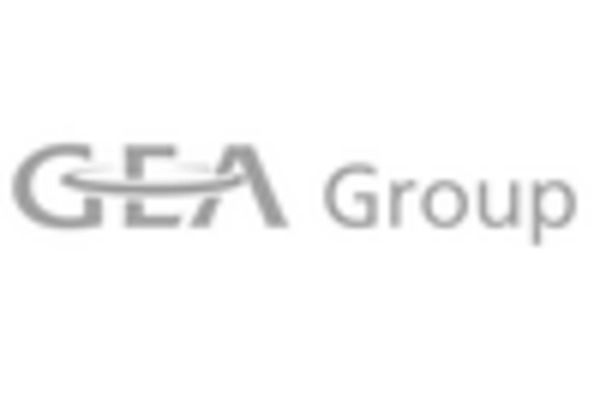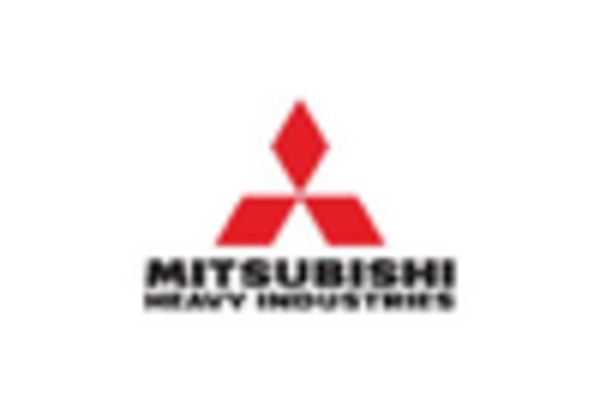Rising Consumer Awareness
Consumer awareness regarding energy efficiency and environmental sustainability is on the rise, significantly influencing the Heat Pump Brazed Plate Heat Exchanger Market. As individuals become more informed about the benefits of heat pumps, including lower energy bills and reduced carbon footprints, the demand for these systems is expected to grow. This heightened awareness is prompting homeowners and businesses alike to consider heat pump installations, which often incorporate brazed plate heat exchangers for optimal performance. Market Research Future indicates that consumer interest in energy-efficient technologies has increased by approximately 25% in recent years. This trend suggests a promising future for the Heat Pump Brazed Plate Heat Exchanger Market, as more consumers seek out sustainable heating and cooling solutions.
Growing Industrial Applications
The Heat Pump Brazed Plate Heat Exchanger Market is witnessing a surge in demand from various industrial sectors. Industries such as food processing, pharmaceuticals, and chemical manufacturing are increasingly adopting heat pump systems for their efficiency and cost-effectiveness. Brazed plate heat exchangers play a crucial role in these applications by providing efficient heat transfer, which is essential for maintaining optimal process temperatures. The industrial sector's growing focus on energy efficiency and sustainability is likely to drive the demand for heat pumps, thereby positively impacting the Heat Pump Brazed Plate Heat Exchanger Market. It is estimated that industrial applications could account for over 30% of the total heat pump market by 2026, further solidifying the importance of brazed plate heat exchangers in these settings.
Regulatory Support and Incentives
The Heat Pump Brazed Plate Heat Exchanger Market benefits significantly from regulatory support and incentives provided by various governments. Policies aimed at promoting energy efficiency and reducing greenhouse gas emissions are encouraging the adoption of heat pump technologies. For instance, many regions offer tax credits, rebates, and grants for the installation of energy-efficient systems, including heat pumps. This financial support not only lowers the initial investment barrier for consumers but also enhances the attractiveness of heat pump systems. Consequently, the demand for brazed plate heat exchangers, which are integral to these systems, is likely to increase. The market is expected to see a steady rise in adoption rates, potentially leading to a market size increase of around 15% in the coming years.
Increasing Focus on Renewable Energy Sources
The Heat Pump Brazed Plate Heat Exchanger Market is experiencing a notable shift towards renewable energy sources. Governments and organizations are increasingly prioritizing sustainability, leading to a surge in the adoption of heat pumps that utilize renewable energy. This trend is driven by the need to reduce carbon emissions and reliance on fossil fuels. As a result, the demand for heat pump systems, which are often paired with brazed plate heat exchangers, is expected to rise. In fact, the market for heat pumps is projected to grow at a compound annual growth rate of approximately 10% over the next five years. This growth is likely to bolster the Heat Pump Brazed Plate Heat Exchanger Market, as these components are essential for efficient heat transfer in renewable energy applications.
Technological Innovations in Heat Pump Design
Technological innovations are playing a pivotal role in shaping the Heat Pump Brazed Plate Heat Exchanger Market. Advances in heat pump design, including improved efficiency and compactness, are making these systems more appealing to consumers and businesses. Innovations such as variable speed compressors and enhanced refrigerants are contributing to better performance and lower operational costs. As manufacturers continue to invest in research and development, the integration of these technologies is likely to drive the adoption of heat pumps, which rely on brazed plate heat exchangers for effective heat transfer. The market is projected to grow as these innovations become more mainstream, potentially leading to a 20% increase in heat pump installations over the next few years.

















